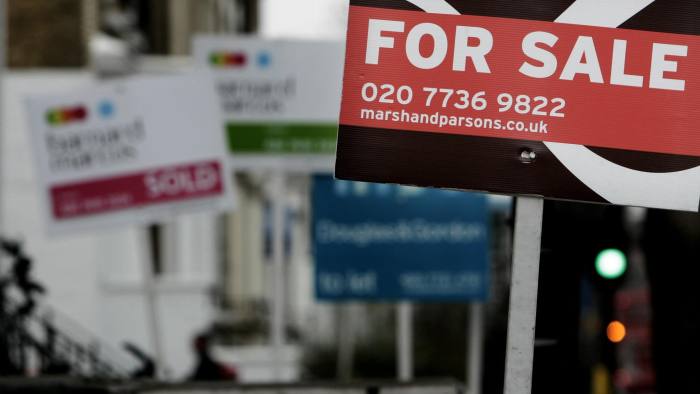Last year, a good friend sold her house in central London and moved to the country. I chivvied her all the way. Every time there were hints of backsliding ó she worried about schools, about getting the right kind of coffee, about not having close next door neighbours and the like ó I called and nagged.
I showed her charts of the ratio between London and non-London house prices, explained that the gap was at a historical high and that if she wanted to make the best possible London-for-not-London trade, 2015 was likely to be the best possible time to do it. Her house didnít sell as fast as she expected (the turn was already beginning). But it did sell ó and at an impressive price too. The trade worked. And I was, for once, right.
This year it might still be possible to trade a small London house for a biggish home counties house. But possibly not one with a tennis court and hot tub. Transactions in central London have collapsed and prices arenít far behind. There has been a 60 per cent fall in transactions over £5m and a more than 33 per cent fall in the number of transactions between £1m and £5m in the six months from May to October. And depending on whose figures you look at, you will see that prices in the very top postcodes are already down anywhere from 10-30 per cent. So whatís going on?
Itís all about tax. Back in April the new surcharge on second homes and buy-to-let investments was introduced: invest today and you will pay 3 percentage points on top of the usual level of stamp duty. That makes the total at the bottom of the market (up to £250,000) up to 5 per cent and the total at the top end much higher ó up to 13 per cent on homes priced at more than £925,000 and up to 15 per cent for those priced above £1.5m. Thatís a seriously high rate of tax: buy a second home as a safe haven escape from, say, Moscow in London at £5m and your tax bill alone with come in at more than £650,000. Off-putting, isnít it?
So off-putting that it is stopping people from buying and so cutting the tax take at the top end by something in the region of £1bn this year (according to forecasts from Naomi Heaton of the property fund LCP).
I know what you are thinking. You are thinking that shoving stamp duty up to 15 per cent at the top end has turned out to be a really bad idea ó it has slowed activity (bad) and it has not raised extra revenue (bad). So, while it makes sense given the governmentís home ownership obsession to leave the surcharge on at the bottom end (where it makes buying cheaper for first-time buyers than buy-to-let investors), it clearly also makes sense to get rid of it at the top end. After all, first-time buyers in the £925,000 plus bracket donít really need the government watching their back.
Obvious, isnít it? To you maybe. But it isnít going to happen. The political incumbency effect of tax is very strong. Once one is in place it is hard to get rid of ó particularly if it looks in any way at all like some kind of tax cut for the rich. This is why the UK has an awful lot of lousy taxes in place, why it is likely to be keeping this one in place too, and why there will be a brake on top-end London house prices for some time to come.
So the question I am asked at the moment is: will property price falls in central London start to spread? In the past, London has usually led the rest of the UK: where it goes, we all go. This time, Iím not so sure it will.
It is still hard to figure out exactly where the market is because everything is distorted by the number of people who rushed into the market to buy before the stamp duty rise in April. If you ignore London, though, and look at prices across the UK, it is hard to make the case that prices are particularly overstretched. On average they are still below 2007 levels in real terms. In parts of Northern Ireland and the north of the UK prices are still down 30-40 per cent in real terms. Tell any seller of an imperfect house in Northumberland that he is in a property bull market and you will, I think, get little more than a bitter laugh.
At the same time it is worth remembering again that one of the main things that moves house prices up and down relative to GDP per capita growth is interest rates. Rising interest rates will eventually bring prices back down to near long-term averages (HSBC pulling the UKís cheapest-ever fix earlier this week was interesting in this context, as are rising inflation expectations) but given that UK interest rates are still running at historic lows (Andy Haldane of the Bank of England puts global rates at a 5,000-year low) you could be forgiven for wondering not why UK-wide prices are so high but why they are so low.
That said, there is one huge danger (or if you are looking for low prices, opportunity) on the horizon: buy-to-let. I have written here before about the tax changes which reduce buy-to-let mortgage interest tax relief to a flat 20 per cent and how I expect that to hit the market. But there is more to come.
UK house prices outside London arenít ridiculously high. But a mixture of tax, loan restrictions and rising interest rates is very unlikely to allow them rise much higher
In the aftermath of the financial crisis, buy-to-let lending was one of few parts of the market to grow. People wanted to borrow and given the lower level of capital needed for property loans, banks wanted to borrow too. That made it tricky for politicians to clamp down on; in a deleveraging environment, all lending is good lending. Thatís no longer the case, as other types of lending are on the up. So it should be no surprise to see that the Bank of England has now been given the power to control the size of buy-to-let loans.
Mark Carney, who is often criticised for the house price bubble he left behind in Canada, has no intention of allowing a new one to appear here (heíll be wanting a new job when he leaves the UK). He will be using the new powers.
With that in mind, I give you a rather wishy washy conclusion. UK house prices outside London arenít ridiculously high. But a mixture of tax, loan restrictions and rising interest rates is very unlikely to allow them rise much higher. This isnít a market to invest in with a view to making capital gains. But it is probably a perfectly reasonable market in which to buy a house to live in.
Merryn Somerset Webb is editor-in-chief of MoneyWeek. The views expressed are personal; merryn@ft.com; Twitter: @MerrynSW




